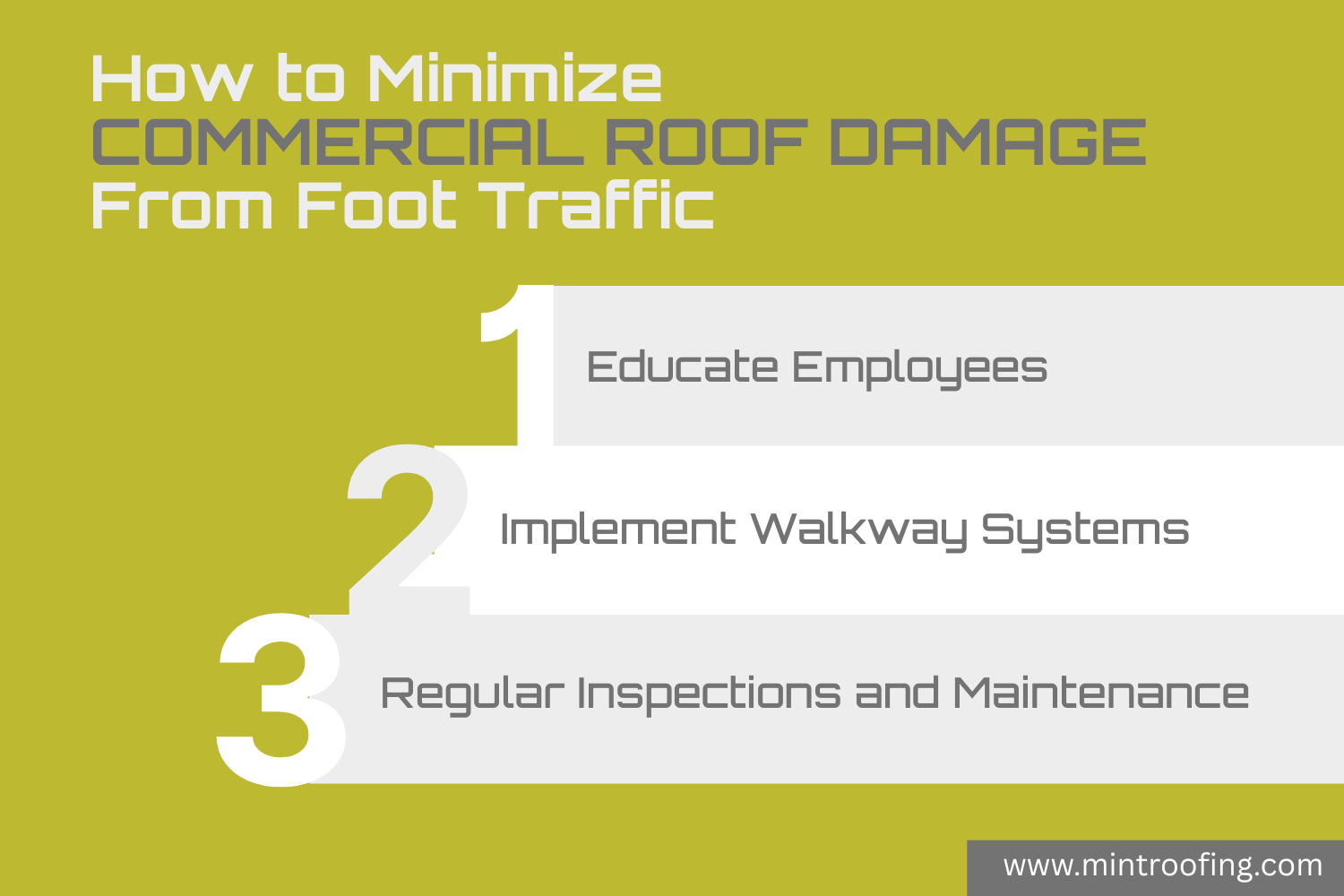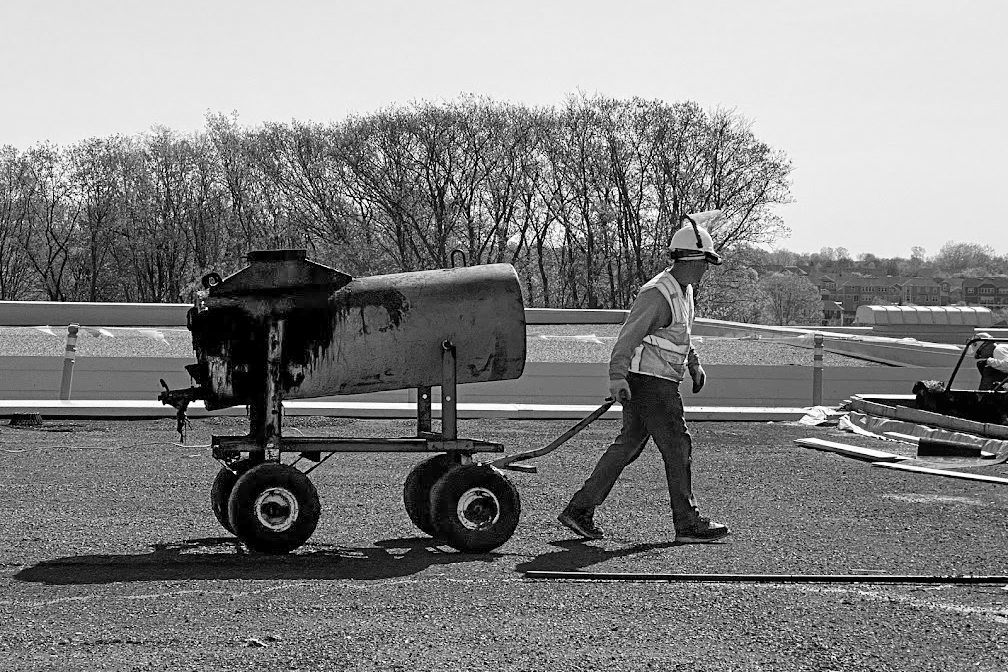Understanding Flat Commercial Roofs
A flat commercial roof is a horizontal covering over a building used for commercial purposes. Unlike the familiar pitched roofs of homes, flat roofs pose different challenges due to their design and materials.
Common materials for flat roofs include built-up roofing (BUR), modified bitumen, and single-ply membranes like TPO or PVC. Each has its own unique characteristics and vulnerabilities.
Modern flat roofs can have a long service life, especially when properly installed and maintained. However, foot traffic — whether from routine inspections, maintenance activities, or HVAC servicing — can significantly impact this service life if not managed correctly.
The Impact of Foot Traffic
Foot traffic on a flat commercial roof can cause damage through several mechanisms:
Mechanical Stress: Human and machinery movement exerts force on the roof, potentially leading to tears, punctures, and deformation of the roofing materials.
Abrasion: Over time, the repeated friction from footsteps and the movement of objects can wear down the roof’s protective layers, exposing the underlying structure to the elements.
Water Ingress: When the roofing membrane is damaged, water can find its way into the building, leading to leaks, structural damage, and the potential for mold growth.
Insulation Compaction: Insulation that has been compressed or otherwise damaged no longer performs its heat-retention and energy-saving functions, affecting the building’s energy efficiency.
UV Exposure: Once the protective layers are breached, exposure to the sun’s ultraviolet rays can accelerate the deterioration of the roofing materials, destabilizing their chemical structure.
Areas Prone to Damage
The impact of foot traffic is not distributed uniformly across the roof. Some areas are more susceptible to damage, such as:
Roof Edges and Corners: These areas tend to be less supported structurally and can experience more significant stresses when walked upon.
Seams: Anywhere the roofing membrane is joined, such as seams, flashing, and penetrations, are potential weak points.
Near Equipment: HVAC units, vents, and other roof-mounted equipment require frequent service and can become focal points of wear-and-tear.
Heavy Foot Traffic vs. Light Foot Traffic
Not all foot traffic is equal in terms of impact and damage potential.
Routine foot traffic from property inspections, maintenance activities, and scheduled repairs can be considered “light” and typically does not pose a significant risk to the roof’s integrity.
On the other hand, “heavy” foot traffic refers to activities that are out of the ordinary, such as events, renovations, or equipment installations. These activities can involve more substantial weight loads and the use of heavy machinery, increasing the risk of damage to the roof.
Missteps or heavy objects can cause immediate, noticeable damage and should be avoided or managed with appropriate protective measures.
Preventive Measures

Proactive steps can be taken to mitigate the risks associated with foot traffic on a flat commercial roof.
Implementing Walkway Systems
One of the most effective measures is to establish designated walkway systems. These paths direct traffic away from vulnerable areas and can be constructed or marked with non-abrasive materials.
Regular Inspections and Maintenance
Frequent inspections can identify and address potential issues before they escalate. Maintenance activities, such as removing debris and checking seals, also help to preserve the roof’s integrity.
Educating Employees
Training employees and contractors about the risks of foot traffic on the roof and the importance of adhering to safety guidelines can prevent unnecessary damage.
Repair and Restoration
When damage does occur, it is crucial to address it promptly to prevent further deterioration. Identifying and assessing the extent of damage is the first step, followed by repairs executed by professionals with the appropriate materials and methods.
Working with Professional Roofers
Resorting to DIY methods or unqualified personnel for roof repairs can often worsen the situation. Experienced roofing contractors can provide long-term solutions designed to maintain the roof’s performance and warranty integrity.
Conclusion
While the impact of foot traffic on a flat commercial roof is a legitimate concern, it’s not inevitable. By understanding how foot traffic can damage your roof and taking steps to manage it, you can extend your roof’s service life and protect your long-term business investment.
Proactive management through preventive measures, regular maintenance, and professional repairs when needed is the best insurance against unexpected roof issues.
Remember, a well-cared-for roof is a business asset that provides shelter and enhances your property’s aesthetic and energy efficiency. Treat it with the respect it deserves, and it will continue to serve your business faithfully.
At Mint Roofing, we have 75 years of experience providing professional roofing services to commercial properties in the greater Minneapolis/St. Paul area.
From flat roof repairs to complete replacements to snow and ice removal, our team has the knowledge and expertise to keep your roof in tip-top condition.
Don’t neglect the health of your flat commercial roof — it’s an investment worth protecting. Let Mint Roofing be your trusted partner in maintaining a reliable commercial roof for years to come.
Contact us today for all your commercial flat roof needs, and let us help you protect your business from the top down!
FAQs
Q: How do I know if my commercial flat roof has been damaged by foot traffic?
A: Signs of damage can include punctures, tears, abrasions, or uneven surfaces.
Q: Can heavy foot traffic cause long-term damage to a flat commercial roof?
A: Yes, heavy foot traffic can weaken the integrity of the roofing materials and lead to more significant issues over time.
Q: Can I take any preventive measures to protect my flat commercial roof from foot traffic damage?
A: Yes, implementing walkway systems, conducting regular inspections and maintenance, and educating employees about the risks of foot traffic on the roof can all help prevent damage. Another effective measure is to limit heavy or unnecessary foot traffic on the roof.
Q: Can I repair a damaged flat commercial roof myself?
A: Attempting DIY repairs on a flat commercial roof is not recommended. Professional roofing contractors have the knowledge, experience, and proper materials to repair and maintain your roof effectively.
Q: What should I do if I notice damage to my flat commercial roof?
A: Contact a professional roofing contractor for an assessment and repair plan as soon as possible. Prompt action can prevent further damage and extend the lifespan of your roof.
Contact Mint Roofing:
Phone:952-473-8080
24-Hour Emergency Line: 952-473-8181
Email: info@mintroofing.com


